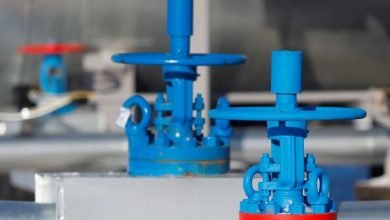Reasons for washing the facade of the building
The price of the stone in Abbas Abad, Isfahan: In response to a question about the reason for washing the facade of the building, the first thing that comes to mind is the beauty of the building. However, a clean building looks nicer than a dirty one. Clean buildings appear more friendly to the general public and are generally more attractive. Buildings are like people in a way. If you look at their appearance, they will have more influence on others.
But after beauty, which is the most obvious and main reason for the need to wash the facade of the building, the second reason for this work is the maintenance needs of the building. If the facade of the building is covered with soot, pus, and other things, you cannot properly see the seams under the facade, so you will not notice in time which part of the facade is being destroyed. So you can’t fix the interface before disaster strikes.
| By washing the facade, it is easy to see potential damage from contamination and take care of it before it gets worse. |
The third reason for washing the facade of a building is to remove harmful contamination. Sulfur and nitrogen oxides and other acid rain pollutants can damage a building’s facade or accelerate its corrosion process.
And, of course, it should be noted that it is not necessary to take care of the facade of all buildings in the same way. The facades of some buildings need special care while others are less important to keep the facades clean.
Among the factors that affect the level of care required for the facade, we can mention the location of the building, its use, its geographical location and the weather in the area. So, by considering all of these factors, you can determine what your building needs a wash.
What are the effective factors in washing the facade of the building?
Buy Abbasabad Stone Online: Before you decide to wash the facade of a building, be sure to consider its efficiency. The facade of commercial buildings, shops, and sales centers need more washing than residential homes.
The area in which the building is located is also very important. For example, a building in Tehran where pollution is more common should be washed than a building in a small city with relatively clean air.
In addition, the filth of buildings in big cities is usually more intense than that of buildings in small towns, and for this reason, more advanced washing methods are needed for these buildings.
For example, the facade of a building in one of the small towns in the north may be well cleaned with just water, but to clean the pollution from the facade of a building in Tehran you have to resort to chemical methods.
When you decide to wash the facade of the building, pay attention to the fact that you may only need to wash part of the facade. For example, the part that can be seen from the sidewalk in front of the house. Nobody washes tall buildings and skyscrapers from the bottom up. In these buildings, the extreme facade is usually washed up to the sixth floor. This is the part that passers-by can see.
The humidity level in the area can also affect the frequency of facade washing. In fact, moisture is the main cause of building corrosion. The combination of moisture and gases in the air or the water-soluble salts present in acid rain accelerate the corrosion process of a building’s facade.
When the salts dissolve in water, they penetrate the microcracks into the depths of the underlying layers. After the water evaporates, the salt crystals remain and press against the interface from the inside. This stress reduces the useful life of the interface.
But by washing the facade regularly, these salts are pushed out of the cracks and practically the life of the facade is increased. For this reason, in areas with high humidity, there is a greater need for facade washing.
|
Buildings in major cities need to wash the facades due to the increase in air pollution and the increase in acid rain. |
There are different ways to wash the facade of a building, but each of them is suitable for certain circumstances. If you do not choose the method correctly, the washing process can seriously damage the appearance of the building instead of cleaning it. For example, a stone facade cannot be washed in the same way as a brick facade.
On the other hand, the type of contamination also affects the choice of washing method. For example, the way to wash the facade of a building covered with soot is different from the facade with dirty oil stains.
But as a general rule, keep in mind that you should always choose the mildest method of washing and be very careful if you want to use more aggressive methods.
There are three general ways to wash the facade: washing with water, washing with chemicals, and washing with shaving. The method of washing by scraping with sand or gravel is not highly recommended because in this method in addition to removing soot and dirt from the facade, some of its surface is also rubbed off, which is considered a kind of damage. Therefore, except in absolutely necessary cases, you should not follow this method.
Washing with water and washing with chemicals are convenient and safe, but each can be used on certain materials.
|
There are three ways to wash facades: washing with water, washing with chemicals, and washing with shaving. The latter method is not recommended except in necessary cases. |
Washing the facades of buildings of all kinds with water
Washing with water is done in three ways: water pressure, soaking and steam. Washing with water is the least dangerous way to wash your face and is the best option to start with. Especially if the facade of your building is contaminated with the usual dust and soot.
The most common of these three methods is water pressure washing. In this method, water is sprayed onto the facade of a building at low to medium pressure (between 100 and 400 psi). (To get an idea of how much pressure, think of a garden hose.
The water pressure in these hoses is about 60 pounds per square inch.) In this method, the water pressure is low at first and gradually increased, and if necessary, wire or hair sandpaper is used.
|
Washing with water is the least dangerous way to wash your face. |
Sometimes non-ionic organic cleaners are added to the water to remove grease stains. Do not use household soaps or detergents in this case, as they stain the facade.
In the soak-washing method, they keep the facade of the building moist for a long time to loosen the heavy soot attached to the facade or the copper on it. This method is usually used for parts of the facade that are not exposed to rain.
Due to its lengthy nature and different stages, the wash-soaking method can take several weeks. But because it is a very gentle method, it is effective for old and historic buildings.
The water pressure washing method is not very popular, but it works well for cleaning the facade of a building from plants such as ivy. This method is also suitable for acid-sensitive stones used in chemical methods.
Washing building facades of all kinds with chemicals
Chemical cleaners are great for removing soot and dust, but unlike water methods, they can also remove paint, graffiti, or rust. Acidic cleaners are effective for brick facade, stone facade, concrete facade, granite facade and sandstone facade.
Alkaline cleaners are suitable for buildings whose materials are sensitive to acids. For example, those used in travertine, marble, polished granite or gypsum sandstone are shown.
For both types of cleaners, the facade surface is first wetted, then the detergent is sprayed onto it and left in the same condition for a period of time. This period varies according to the type of detergent and is usually longer for alkaline detergents than for acidic ones.
After this period, they clean the surface of the facade with the help of detergents and dirt. Of course, for alkaline detergents, it is necessary to neutralize them first with a little acidic water.
|
Chemical cleaners are great for removing traces of paint, graffiti, or rust. |
Preparation for washing facades and washing building facades
To wash the facade before any work, you must see the type of facade of your building and choose the best method based on this. If your display is made of stone, be sure to specify the exact type of stone. Because some limestones, for example, resemble sandstones, or a surface that looks like natural stone at first glance may actually be concrete.
In addition, some bricks may contain impurities and are sensitive to certain chemicals, and if you do not know how to use such materials, after washing, stains will remain on the facade of your building.
Source: Iran Stone Industries:











